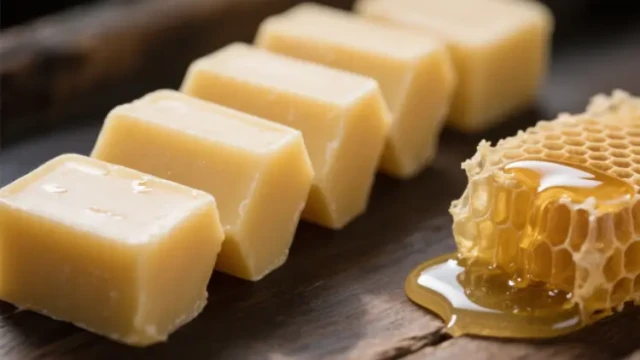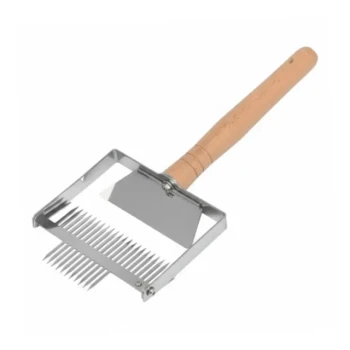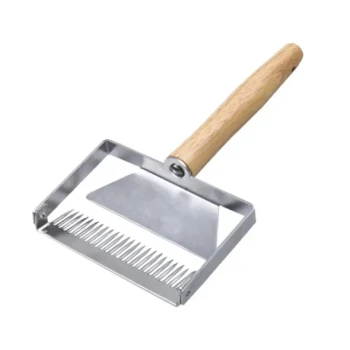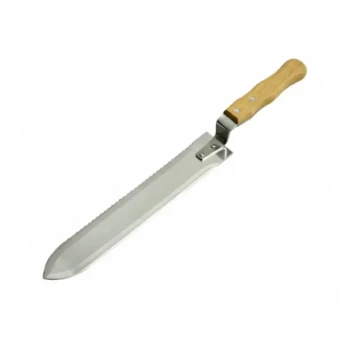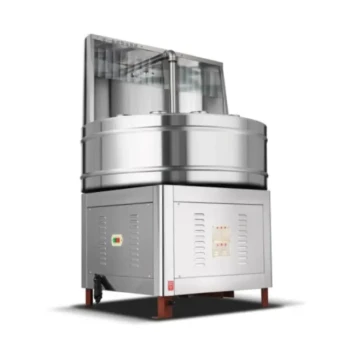밀랍 뚜껑 처리는 꿀 추출의 단순한 부산물로 종종 간과되지만, 올바르게 처리하면 꿀 수확량을 크게 늘리고 고품질 밀랍을 재사용할 수 있도록 생산할 수 있습니다. 소규모 양봉가이든 상업용 양봉장을 관리하든, 뚜껑 처리 과정을 최적화하면 어떤 자원도 낭비되지 않습니다.
이 가이드에서는 다음을 다룹니다:
✔ 뚜껑을 녹이는 것이 꿀 회수를 개선하는 이유
✔ 밀랍 품질 보존을 위한 모범 사례
✔ 재활용 밀랍을 재활용하는 창의적인 방법
효율성과 수익성을 향상시키는 실행 가능한 방법들을 자세히 살펴보겠습니다.
밀랍 뚜껑 처리의 중요성
벌집 세포를 밀봉하는 데 사용하는 얇은 밀랍 층인 밀랍 뚜껑에는 잔여 꿀과 고순도 밀랍이 포함되어 있습니다. 이를 올바르게 처리하면 두 가지 주요 목적을 달성할 수 있습니다:
-
꿀 회수 극대화
- 수확한 꿀의 최대 5~10%가 뚜껑에 갇혀 있습니다.
- 효율적인 녹임 및 배수를 통해 이 잉여분을 회수하여 수확량을 직접적으로 늘립니다.
-
밀랍 무결성 보존
- 뚜껑 밀랍은 거친 빗자루나 오래된 애벌레 벌집보다 깨끗하고 가치가 높습니다.
- 적절한 취급은 오염을 방지하여 프리미엄 제품에 재사용 가능한 밀랍을 보장합니다.
"뚜껑을 처리하지 않고 버릴 때 얼마나 많은 꿀이 손실되는지 생각해 보셨나요?"
뚜껑을 녹이는 것이 꿀 수확량을 늘리는 방법
올바른 녹임 방법 선택
뚜껑 처리를 지배하는 두 가지 주요 기술이 있습니다:
태양열 밀랍 용해기
- 지속 가능성: 햇빛을 사용하여 에너지 비용을 절감합니다.
- 부드러운 처리: 느린 녹임은 과열을 방지하여 밀랍 품질을 보존합니다.
- 확장성: 취미용부터 상업용까지 다양한 크기로 제공됩니다.
이중 보일러 시스템
- 더 빠른 처리: 대량 생산에 이상적입니다.
- 정밀 제어: 일관된 온도를 유지하여 밀랍 손상을 방지합니다.
모범 사례: 소량의 경우 태양열 용해기가 비용 효율적이고 친환경적입니다. 더 큰 양봉장은 속도를 위해 이중 보일러를 선호할 수 있습니다.
꿀 배수 최적화
- 미세한 메쉬 필터(≤400 미크론)를 사용하여 밀랍과 꿀을 분리합니다.
- 꿀을 완전히 회수하기 위해 뚜껑을 몇 시간 동안 떨어뜨립니다.
- 회수된 꿀은 술(mead) 생산이나 벌집 보충제 감미료로 재사용합니다.
밀랍 품질 보존을 위한 모범 사례
-
과열 방지
- 85°C(185°F) 이상의 온도는 밀랍을 어둡게 하고 가치를 떨어뜨립니다.
- 태양열 용해기는 자연스럽게 이 임계값 이하로 유지됩니다.
-
오염 물질 최소화
- 뚜껑을 미리 헹궈 프로폴리스와 이물질을 제거합니다.
- 냄새를 피하기 위해 식품 등급 용기에 녹인 밀랍을 보관합니다.
-
밀랍 효율적으로 재사용
- 깨끗한 밀랍은 금형에 부어 재판매하거나 재활용할 수 있습니다(다음 섹션 참조).
전문가 팁: 어두운 밀랍이 반드시 품질이 낮은 것은 아닙니다. 종종 특정 제품에 바람직한 더 높은 미네랄 함량을 나타냅니다.
수확부터 재사용까지: 재활용 밀랍의 창의적인 응용
전통적인 촛불 외에도 재활용 뚜껑 밀랍은 다음과 같이 변형될 수 있습니다:
1. 화장품 및 스킨케어
- 립밤, 로션 바, 연고는 밀랍의 천연 연화 특성을 활용합니다.
2. 벌집 유지보수
- 여왕벌 유인제: 새로 만든 벌집 틀에 녹인 밀랍을 바르면 여왕벌을 유인합니다.
- 윤활: 벌집 도구에 코팅하면 마찰과 녹을 줄입니다.
3. 가정용
- 가죽 또는 직물 방수 처리.
- DIY 미술 용품(예: 엔카우스틱 회화).
알고 계셨나요? 밀랍 촛불은 알레르겐에 결합하는 음이온을 방출하여 실내 공기를 정화합니다.
뚜껑 처리 과정 최적화할 준비가 되셨나요?
HONESTBEE는 상업용 양봉가 및 유통업체에 꿀과 밀랍 회수를 극대화하도록 설계된 내구성 있고 확장 가능한 도구(태양열 밀랍 용해기부터 뚜껑 제거 탱크까지)를 공급합니다. 작업 흐름을 간소화하고 수익성을 높이기 위해 도매 중심 솔루션을 살펴보세요.
"간단한 업그레이드로 수확량을 변화시킬 수 있는데 왜 귀중한 자원을 낭비하겠습니까?"
주요 요점:
- 뚜껑을 처리하여 수확당 5~10% 더 많은 꿀을 회수합니다.
- 태양열 용해기는 친환경적이고 노력이 적은 밀랍 추출을 제공합니다.
- 밀랍을 수요가 많은 제품(화장품 및 여왕벌 유인제 등)으로 재활용합니다.
뚜껑 작업 흐름을 개선함으로써 폐기물을 수익으로 전환할 수 있습니다. 이는 양봉가가 할 수 있는 가장 현명한 투자 중 하나입니다.
시각적 가이드
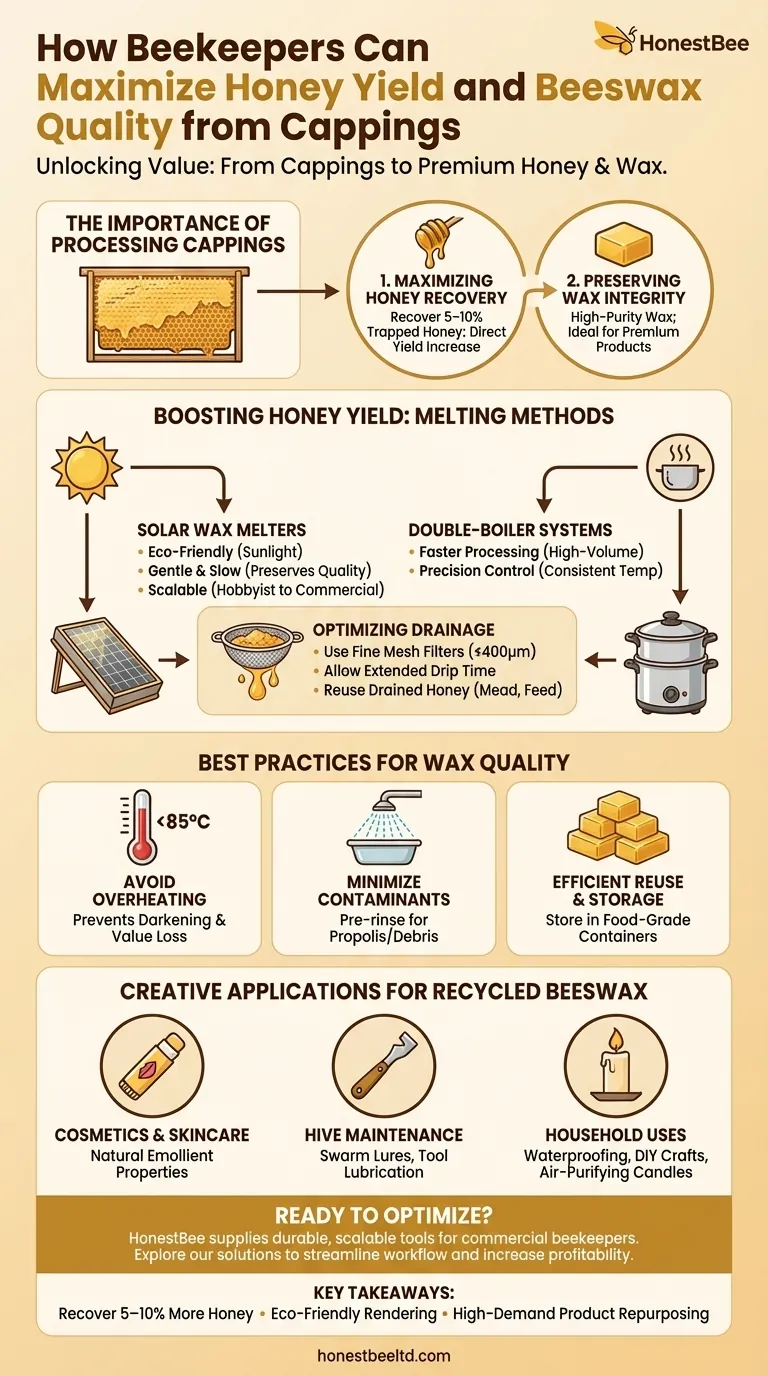
관련 제품
- 양봉용 구부러진 타인이 있는 전문가용 엑스트라 와이드 언캡핑 포크
- 스크레이퍼가 달린 스테인리스 스틸 양면 꿀 언캡핑 포크
- 스테인리스 스틸 듀얼 블레이드 언캡핑 평면
- 스크레이퍼 양봉 도구가 있는 엑스트라 와이드 스테인리스 스틸 꿀 언캡핑 포크
- 양봉 및 벌꿀 가공용 전문가용 와이드 블레이드 꿀 스크레이퍼
